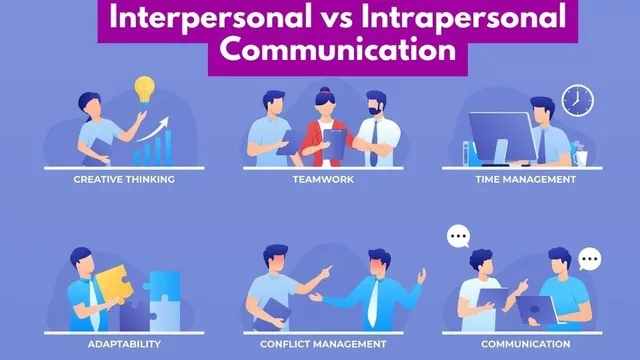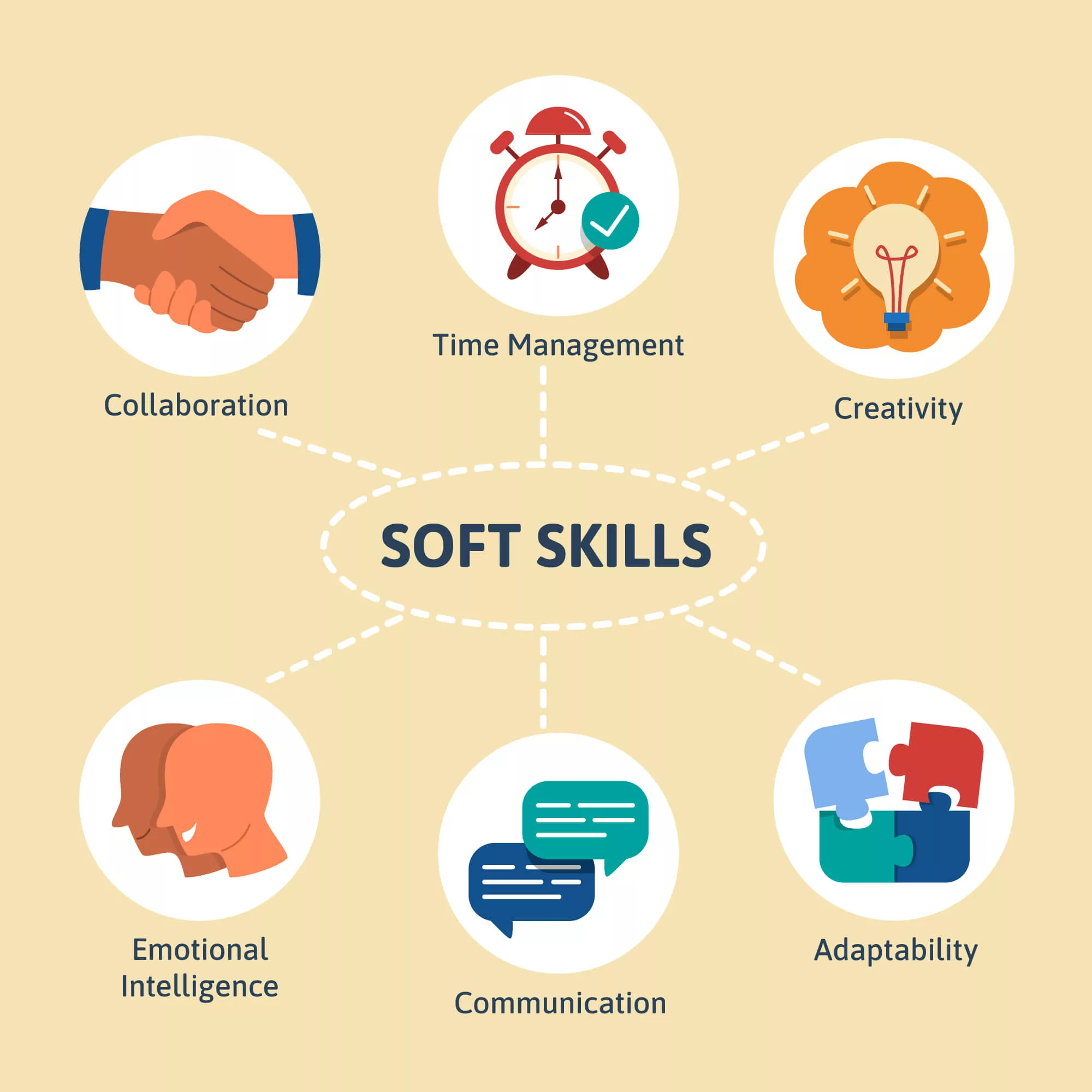In the broader context of human development and interaction, the mastery of communication skills holds a paramount role in shaping emotional intelligence, social dynamics, and cognitive maturation. The profound impact of effective communication is widely acknowledged, prompting a detailed investigation into the intricate realms of interpersonal vs intrapersonal communication.
In this comprehensive guide, we embark on a journey to unravel the definitions, distinctions, and significance of these two dimensions of communication, which collectively contribute to the cultivation of well-rounded individuals.
What is an Interpersonal Communication?
Interpersonal communication is a dynamic process that involves active listening and effective expression. Engaging in interpersonal communication learn to interpret verbal cues, discern emotions, and adapt their communication style based on the context.
A study conducted by Harvard University found that children who actively engage in role-playing activities and group discussions tend to exhibit enhanced negotiation skills, conflict resolution abilities, and improved empathy towards others.
What is an Intrapersonal Communication?
Intrapersonal communication, often referred to as self-talk, empowers to understand their feelings, desires, and aspirations. Encouraging to maintain personal journals or engage in quiet reflection time nurtures their ability to identify strengths, weaknesses, and personal growth areas.
According to research published in NCBI, intrapersonal communication skills positively correlate with higher self-esteem and emotional intelligence in adolescents.
Defining Interpersonal and Intrapersonal Communication
Interpersonal communication refers to the exchange of thoughts, ideas, and emotions between two or more individuals. It encompasses verbal and nonverbal interactions, including conversations, gestures, facial expressions, and body language.
Developing strong interpersonal communication skills equips them with the tools to express themselves, understand others, and establish meaningful relationships.
According to a study by the American Psychological Association, children with well-developed interpersonal skills are more likely to have positive social interactions and academic success.
Intrapersonal communication revolves around the internal dialogue and self-awareness that takes place within an individual. It involves introspection, self-reflection, and the ability to understand one’s emotions, thoughts, and motivations. A research study published in the Journal of Research in Childhood Education highlighted that intrapersonal communication skills are linked to higher self-esteem and improved decision-making abilities among children.
Distinguishing Features of Interpersonal and Intrapersonal Communication


Communication is a fundamental aspect of human interaction that takes various forms, ranging from internal dialogues within an individual’s mind to dynamic exchanges between multiple people. This comparison table delves into the realms of intrapersonal and interpersonal communication.
This table provides a comprehensive exploration of the diverse aspects that differentiate these two forms of communication.
| Aspect | Intrapersonal Communication | Interpersonal Communication |
|---|---|---|
| Definition | Communication that occurs within an individual’s mind | Communication that takes place between two or more individuals |
| Participants | Single individual | Two or more individuals |
| Nature | Self-reflection, inner dialogue, mental processing | Interactive, collaborative, exchange of thoughts and emotions |
| Communication Channels | Thoughts, introspection, inner monologue | Verbal language, nonverbal cues, facial expressions, gestures |
| Purpose | Self-analysis, decision-making, self-awareness | Sharing information, building relationships, resolving conflicts |
| Feedback | Internal reflections | Immediate responses, verbal and nonverbal reactions |
| Dynamics | Personal thoughts and emotions | Interaction, negotiation, mutual influence |
| Social Context | Independent of external parties | Shaped by social norms, cultural context, and relational dynamics |
| Language Use | Internal language, mental imagery | Shared language, context-dependent language use |
| Feedback | Limited to self-awareness | Diverse feedback, multiple perspectives |
| Emotional Expression | Inner emotional states may not be externally visible | Emotional expression is shared and observed by others |
| Examples | Self-talk, daydreaming, decision pondering | Conversations, debates, meetings, social interactions |
| Self-Disclosure | Deep exploration of personal thoughts and feelings | Sharing personal experiences, emotions, and thoughts |
| Psychological Impact | Influences self-concept, attitudes, and behaviors | Shapes interpersonal relationships, builds empathy |
| Cognitive Processing | Internal reasoning, problem-solving | Joint problem-solving, brainstorming |
| Privacy | Typically private, occurring in one’s mind | Shared with others, varying degrees of privacy |
| Role of Listening | Internal reflection on thoughts | Active listening, understanding, responding |
What does the Table Conclude?
Keep in mind that the distinction between intrapersonal and interpersonal communication is not always clear-cut, as communication processes can be fluid and interconnected. The table provides a comprehensive overview of the key differences, but real-life communication often involves a blend of both intrapersonal and interpersonal aspects.
Thus highlighting their distinct characteristics, purposes, and impacts. Intrapersonal communication involves the internal dialogue and self-reflection that occur within an individual, contributing to self-awareness and decision-making.
On the other hand, interpersonal communication encompasses the vibrant interplay of thoughts, emotions, and ideas between two or more individuals, fostering understanding, relationships, and collaboration.
The Synergy Between Interpersonal and Intrapersonal Communication
While interpersonal and intrapersonal communication may seem distinct, they are deeply interconnected. Effective interpersonal communication hinges on a self-awareness and ability to recognize their emotions, which in turn enhances their capacity to respond empathetically to others.
Conversely, healthy interpersonal interactions contribute to a positive self-image, reinforcing the significance of intrapersonal dialogue.
Effective communication is a cornerstone skill that underpins healthy relationships, personal growth, and success in various aspects of life.
By integrating proven strategies early on, individuals can be equipped to articulate their thoughts, connect empathetically, and navigate the complexities of social dynamics. Here are practical tips, backed by research, to foster robust communication skills:
1. Active Listening:
Active listening is the bedrock of effective communication. Engaging in practices that promote attentive listening can benefit individuals of all ages. Activities like participating in discussions, storytelling sessions, or interactive games encourage individuals to truly absorb and process what is being communicated.
Nonverbal Behavior has highlighted that cultivating active listening skills from a young age contributes to language development and comprehension of nonverbal cues. This practice prompts individuals to dedicate their full focus to others, thereby enhancing comprehension and building a stronger connection through understanding.
Emotion Identification:
Proficiently recognizing and expressing emotions is a pivotal component of effective communication. Employing tools such as emotion charts and visual aids helps individuals of all ages, not just children, become more attuned to their feelings.
Cognition and Emotion have indicated that individuals capable of accurately identifying emotions—both within themselves and in others—are more likely to develop robust relationships and better emotional regulation skills. Enhancing emotional vocabulary enables individuals to communicate their thoughts and feelings more effectively to others, fostering deeper connections.
Empathy Cultivation:
Empathy, a fundamental trait for effective communication, is key to establishing meaningful relationships. Constructive techniques, like engaging in role-playing scenarios, encourage individuals to step into different perspectives and comprehend diverse viewpoints.
Child Development reveals that participation in empathy-building role-play can enhance prosocial behavior while mitigating aggressive tendencies in children and beyond. This practice fosters compassion and teaches individuals to consider the emotions of others during communication, leading to more meaningful interactions.
Mindfulness Practices:
Integrating mindfulness practices can significantly contribute to intrapersonal communication skills, benefiting individuals at any age. Simple exercises like guided breathing or gratitude journaling promote self-awareness of thoughts and emotions.
Research indicates that mindfulness practices are correlated with improved attention, emotional regulation, and overall well-being in children and adults alike. By cultivating mindfulness, individuals learn to communicate effectively with themselves, subsequently enhancing their ability to interact positively with others.
Thus by incorporating these evidence-based strategies into daily routines, a lasting impact can be made on communication capabilities and overall emotional intelligence.
By actively nurturing these skills, individuals are empowered to navigate the intricacies of communication, express themselves authentically, and foster positive relationships throughout their lives. The application of these techniques transcends age, as they contribute to personal development and improved interactions across various stages of life.
Interpersonal Communication Example Case Study
In the realm of human interaction and personal development, the significance of effective communication is undeniable. This is exemplified through real-life case studies that illuminate the intricate dimensions of interpersonal and intrapersonal communication.
These case studies offer tangible examples of how adept communication skills can shape outcomes, bridge divides, and foster personal growth.
Case Study: The Negotiation Diplomat
John, a seasoned diplomat, was tasked with negotiating a crucial trade agreement between two nations with historically strained relations. The success of the negotiations hinged not only on the technical aspects of the deal but also on the ability to build rapport and trust with representatives from both sides.
John’s strong interpersonal communication skills came to the forefront during these negotiations. He actively listened to the concerns of each party, acknowledging their perspectives, and ensuring that their voices were heard.
Through his empathetic gestures, open body language, and respectful demeanor, he created an environment conducive to constructive dialogue.
By fostering an atmosphere of mutual respect and understanding, John successfully navigated the complexities of cultural differences, conflicting interests, and emotional sensitivities.
His adept communication skills played a pivotal role in bridging the gap between the two nations, leading to a groundbreaking trade agreement that not only addressed economic matters but also laid the foundation for improved diplomatic relations.
Intrapersonal Communication Case Study:
By delving into these narratives, we gain valuable insights into the pivotal roles that communication plays in navigating complex challenges and realizing individual potential. Let us look at Intrapersonal example case study for now.
Case Study: The Entrepreneur’s Journey
Sarah, an aspiring entrepreneur, embarked on a journey to establish her own sustainable fashion brand. As she navigated the challenges of launching a startup, she encountered numerous setbacks and uncertainties that tested her resolve.
Sarah’s intrapersonal communication skills became her compass during this entrepreneurial odyssey. Through self-reflection and introspection, she assessed her strengths and weaknesses, identified her core values, and clarified her long-term vision. During moments of doubt, she engaged in a dialogue with herself, acknowledging her fears and seeking solutions.
By cultivating a strong sense of self-awareness, Sarah was able to make informed decisions that aligned with her business goals and personal aspirations.
Her ability to listen to her inner voice and trust her instincts empowered her to persevere through obstacles and pivot when necessary. As a result, her sustainable fashion brand not only thrived but also embodied the values she held dear, resonating with a loyal customer base that shared her vision.
These case studies underscore the vital role that both interpersonal and intrapersonal communication play in diverse contexts.
Interpersonal communication facilitates effective collaboration and understanding among individuals, while intrapersonal communication empowers individuals to navigate challenges and make choices that align with their authentic selves.
Key Points of the Case Studies
The case studies presented above exemplify the profound impact of communication skills on diverse aspects of life. John’s diplomatic negotiation underscores how interpersonal communication can transcend communication barriers and foster meaningful agreements. Thus, illuminating the power of dialogue and empathy.
Meanwhile, Sarah’s entrepreneurial journey demonstrates how intrapersonal communication empowers individuals to harness self-awareness and resilience.
To ultimately shaping the trajectory of their endeavors. Together, these cases emphasize that communication, whether with others or with oneself, is a cornerstone of success, connection, and personal evolution.
Conclusion
We believe that nurturing both interpersonal and intrapersonal communication skills equips us with a holistic toolkit for personal growth and meaningful connections.
By understanding the nuanced interplay between these two forms of communication. Individuals can navigate the complexities of the world with confidence, empathy, and self-assuredness.
As we master the art of communication, they embark on a journey of self-discovery and interpersonal harmony. That paves the way for a brighter future. Both intrapersonal and interpersonal communication threads are vital contributors.
Intrapersonal communication, the silent conversation within our minds, shapes our self-concept and guides personal decisions. It enables us to explore our thoughts and emotions in a private realm, fostering self-awareness and growth.
Interpersonal communication, on the other hand, encompasses the richness of shared experiences, building bridges between individuals, cultures, and ideas.
Through verbal and nonverbal exchanges, people navigate the complexities of relationships, establish connections, and collaborate to achieve good communication skills.
Recognizing the distinctive attributes of intrapersonal and interpersonal communication enhances our understanding. Showcases the intricacies of human expression and connection, empowering us to engage more meaningfully with ourselves and others.
Footnotes
- American Psychological Association. (2019). Interpersonal Skills in Children. https://www.apa.org/education/k12/interpersonal-skills
- Wiggins, S. A., & Crowson, H. M. (2016). The effect of social-emotional learning on intrapersonal and interpersonal communication skills. Journal of Research in Childhood Education, 30(2), 204-217.
- Weiss, L. H., & Friend, R. (2002). Social self-efficacy, academic self-concept, and social support in relation to interpersonal skills and academic success. Journal of Youth and Adolescence, 31(6), 543-550.
- Waters, L., Loton, D., & Jach, H. (2018). School belonging in students 12-18 years old: personal wellbeing, family, school, and teacher factors. The Journal of Educational Research, 112(3), 336-351.
- Flavell, J. H., Beach, D. R., & Chinsky, J. M. (1966). Spontaneous verbal rehearsal in a memory task as a function of age. Child Development, 37(2), 283-299.
- Lagattuta, K. H., & Thompson, R. A. (2007). Children’s understanding of the distinction between real and apparent emotion. Child Development, 78(1), 847-861.
- Eisenberg, N., & Lennon, R. (1983). Sex differences in empathy and related capacities. Psychological Bulletin, 94(1), 100-131.
- Semple, R. J., Lee, J., Rosa, D., & Miller, L. F. (2010). A randomized trial of mindfulness-based cognitive therapy for children: promoting mindful attention to enhance social-emotional resiliency in children. Journal of Child and Family Studies, 19(2), 218-229.











